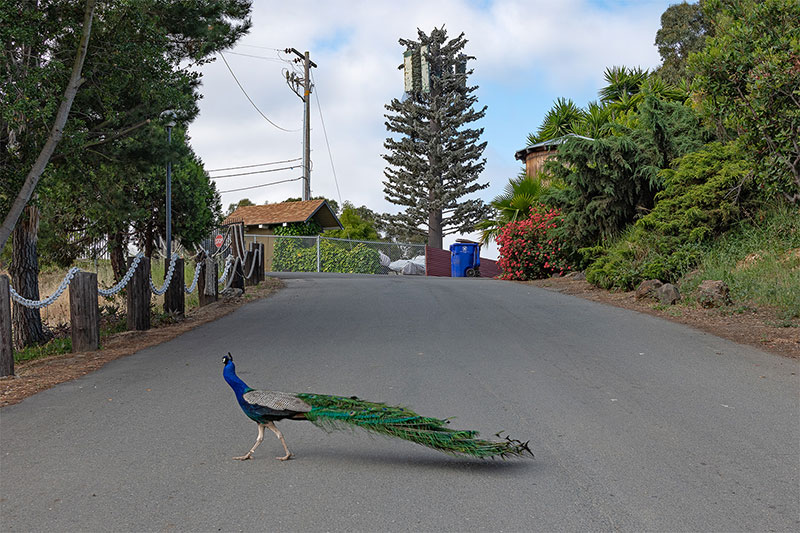
Website | Facebook | Instagram | Book
Award-winning photographer Annette LeMay Burke first stumbled upon a cell phone tower masquerading as a tree in the early 2000s. Even living in her native Silicon Valley in Northern California surrounded by technology, she thought the tree looked out of place.
This first encounter with a decorated tower sparked her interest. From 2015-2020 she embarked on a series of road trips across the American West to document these strange manmade creations allegedly built to minimize visual pollution by blending in with the environment.
“While I was initially drawn to the towers’ whimsical appearances, the more I photographed them, the more disconcerted I felt that technology was clandestinely modifying our environment,” she writes in her essay in the book. “I began to explore how this manufactured nature had imposed a contrived aesthetic in our neighborhoods… I dubbed the series Fauxliage.”

Website | Facebook | Instagram | Book

Website | Facebook | Instagram | Book
As disguised cell phone towers proliferate, I find it ironic that instead of providing camouflage, their disguises actually unmask their true identities. The towers have an array of creative concealments. They often impersonate trees such as evergreens, palms, and saguaros.
Some pillars serve other uses such as flagpoles or iconographic church crosses. Generally the towers are just simulacra. They are water towers that hold no water, windmills that provide no power, and trees that provide no oxygen. Yet they all provide five bars of service.

Website | Facebook | Instagram | Book

Website | Facebook | Instagram | Book
As humans continue to encroach on the natural world, our demand for cellular service increases too. Because the towers have such conspicuous arboreal costumes, their spread is even more obvious and incongruous with nature.
The faux trees, particularly the conifer models, pose an environmental concern. As the trees weather and age, the plastic needles breakdown into tiny pieces and litter the ground beneath the trees. These plastic particles can easily enter the ecosystem. What started as an attempt to reduce visual pollution is now creating plastic pollution.

Website | Facebook | Instagram | Book

Website | Facebook | Instagram | Book
The quaint masquerades do obscure one thing—the cellular equipment’s covert ability of collecting all the personal data transmitted from our cell phones. Big tech and the government are always listening (and buying, selling, and storing).
As the fifth generation (5G) of cellular technology continues to roll out, new cell towers will be smaller and more inconspicuous—think small antennas integrated into the tops of streetlight poles. Perhaps elaborately disguised “fauxliage” towers will start disappearing and be considered an anachronism of the early 21st century.

Website | Facebook | Instagram | Book

Website | Facebook | Instagram | Book

Website | Facebook | Instagram | Book

Website | Facebook | Instagram | Book
Fauxliage (Daylight, May, 2021) gathers together sixty-six of Burke’s beautifully rendered photographs of an iconic Western landscape now populated by a quirky mosaic of cell phone towers pretending to be palm trees, evergreens, cacti, flagpoles, clock towers and crosses.

Website | Facebook | Instagram | Book

Website | Facebook | Instagram | Book

Website | Facebook | Instagram | Book










